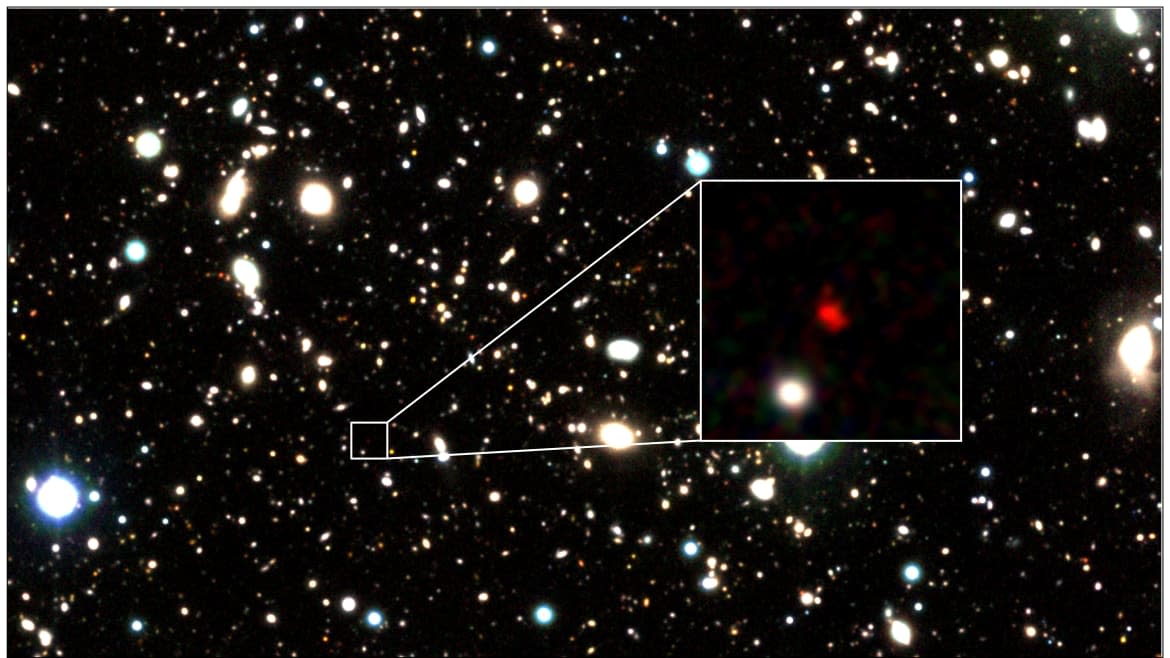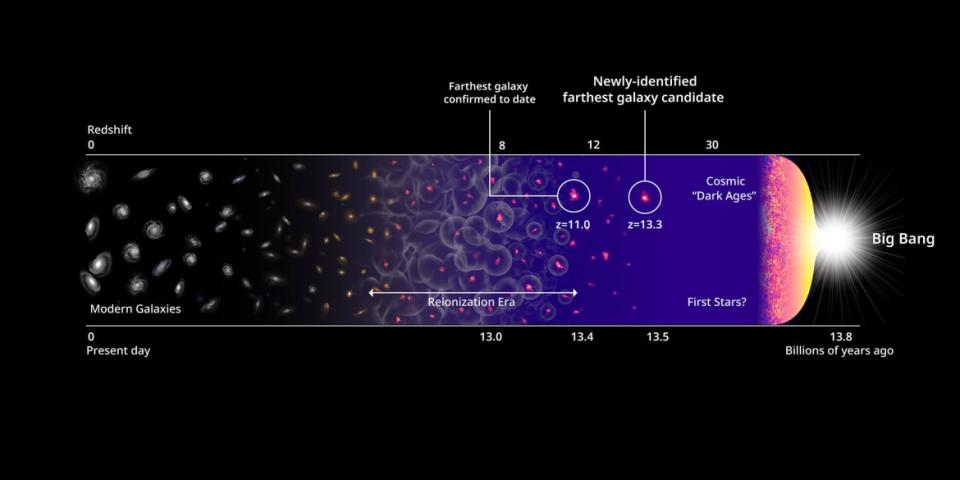This Galaxy Is the Most Distant Object Ever Detected in Space

The infinite expanse of space is somehow feeling a little bit bigger now, after an international team of researchers announced they had discovered the most distant astronomical object ever observed.
The object, a galaxy dubbed HD1, rests 13.5 billion light years from Earth, according to a study published Thursday in the Astrophysical Journal. Due to its distance, the team is still unsure what type of galaxy it is—but they hypothesize that it could be a massive galactic nursery containing some of the universe’s first stars.
“Answering questions about the nature of a source so far away can be challenging,” Fabio Pacucci, lead author of the study and an astronomer at the Center for Astrophysics, said in a press release. “It’s like guessing the nationality of a ship from the flag it flies, while being faraway ashore, with the vessel in the middle of a gale and dense fog. One can maybe see some colors and shapes of the flag, but not in their entirety. It’s ultimately a long game of analysis and exclusion of implausible scenarios.”
The Hubble Space Telescope Spots the Oldest Star We’ve Ever Encountered
However, Paccuci and his team found that the galaxy gives off extremely bright ultraviolet light, and they were even able to calculate that HD1 was producing stars at “an incredible rate” of more than 100 each year. “This is at least 10 times higher than what we expect for these galaxies,” he said.
Fascinatingly, the galaxy could also be home to Population III stars, which are the hypothetical first-generation stars that originally formed when the universe began after the Big Bang. Remember: Observing a galaxy more than 13 billion light years away means you’re also observing the very distant past. This allows astronomers to learn more about the very earliest moments of the universe.
Another theory is that HD1 contains a supermassive blackhole that’s ejecting large amounts of high energy photons as it consumes the gaseous objects around it. If it is a black hole, it would be one of the oldest ones ever recorded.

A timeline of the earliest galaxy candidates and the history of the universe.
“HD1 would represent a giant baby in the delivery room of the early universe,” Avi Loeb, an astronomer at the Center for Astrophysics and co-author on an accompanying paper published in the Monthly Notices of the Royal Astronomical Society Letters, said in the release. “It breaks the highest quasar redshift on record by almost a factor of two, a remarkable feat.”
The team now hopes that the newly launched James Webb Space Telescope will give them an opportunity to study HD1 further. The Webb, launched last December, is expected to give astronomers and researchers the unprecedented opportunity to peer further into the universe than ever before. Once it sets its sights on HD1, it’ll be able to determine for sure if it’s really the oldest and most distant galaxy ever found.
Got a tip? Send it to The Daily Beast here
Get the Daily Beast's biggest scoops and scandals delivered right to your inbox. Sign up now.
Stay informed and gain unlimited access to the Daily Beast's unmatched reporting. Subscribe now.

